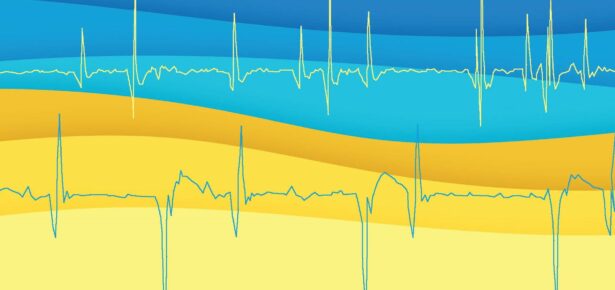
This book, based on the author’s 25 years of practising and teaching the specialty of clinical neurophysiology, is aimed at two groups of clinicians.
First and foremost, at new trainees in clinical neurophysiology. It is an exciting time for them. They are about to learn a completely new diagnostic approach which benefits from all the latest and best equipment developed by gifted colleagues in electronics and computing.
But the immediate prospect is daunting. The medical curriculum will have provided some preparation in the form of neuroanatomy and neurophysiology (details of which have, no doubt, been retained in their entirety) but little in the way of physics or electronics.
The author recalls his early experiences at this stage and being enormously grateful to Lenman and Ritchie who had written a book with similar objectives. As time has gone by the burgeoning collection of books on the specialty has remained excellent in quality but they have become larger and more technical. The time seems to have arrived for an updated introduction to the specialty.
The second targeted group are referring clinicians. They know that the tests can be helpful in the diagnosis of some patients, but which patients? These clinicians are not expected to choose the tests – in fact the choice evolves as the examination proceeds. The repertoire of tests available to the clinical neurophysiologist is extensive and growing. They can be very lengthy. The examiner, who will have a good knowledge of neurology, neuroanatomy and general medicine, will adapt the diagnostic approach as the results of each part of the examination unfolds. But some guidance to the clinical neurophysiologist is invaluable. If the referring clinician has a clear question or differential diagnosis such as: Where is the nerve entrapment and what is its degree? Or what type of neuropathy is present? – this can save time. Most departments will have forms containing the question ‘Reason for request’. Clinicians who have read this book will, it is hoped, no longer need to reply ‘Good opening gambit’
As both target groups will be well aware, the study of medicine is essentially the study of a foreign language. Once the vocabulary is mastered, it is clear that there are no hidden, complex concepts. Referring clinicians who have achieved this will no longer be frustrated by the otherwise incomprehensible jargon of the reports they receive.
The first part of the book deals with such subjects as basic neuroanatomy, physiology and pathology relating to nerves, muscles and neuromuscular junctions. These brief descriptions are intended to give just sufficient detail to provide a coherent context for the main sections of the book which follow. There are also short sections on the electronic equipment used and the concept of volume conduction. Matters of technique are mentioned briefly and only where relevant to the discussion of an underlying principle.
The specialist trainees will, it is hoped, benefit from this brief distillation of pertinent background material. Referring clinicians can probably skip much of it.
The second part of the book describes in detail the principles underlying the techniques of electromyography and nerve conductions studies. These include how the differentiation of muscle disease (myopathy) from disease of the muscle arising from pathology within its nerve supply (neuropathy) is achieved. The recording of electrical activity from muscles at rest and during voluntary effort is described in detail, accompanied by relevant screenshots of actual recordings.
The role of nerve conduction studies in the diagnosis of peripheral nerve degeneration or demyelination is dealt with at length. The value and limitations of the examinations in different circumstances are clearly described. The diagnosis of disorders of the neuromuscular junction by means of nerve conduction studies or single fibre electromyography is fully explained. F-waves and H-reflex measurements are briefly described given their limited clinical usefulness. As before, the text is complemented by plentiful screenshots of high-quality recordings. Trainees are urged to adopt the same approach since artefacts can lead to inaccurate measurements and erroneous conclusions.
There follows a comprehensive chapter showing how these principles are used to diagnose common clinical problems such as myopathies, entrapment neuropathies, generalised peripheral neuropathy, radiculopathy, isolated lesions of peripheral nerves, and disorders of neuromuscular transmission.
The book concludes with some curios, including the disclosure of aberrant nerve pathways, and a brief discussion of the thorny concept of normal data.
The text can probably read in two or three sittings. This should increase its appeal, particularly to busy referring clinicians in specialties such as neurology, orthopaedic surgery, general medicine, rheumatology and endocrinology by helping them select patients for referral and assisting them in the interpretation of the results.
Throughout, the emphasis is on the principles underlying the measurement techniques and the interpretation of the findings. Since these principles are immutable their application is timeless and so the book should remain relevant whatever new methods evolve.
Latest Comments
Have your say!